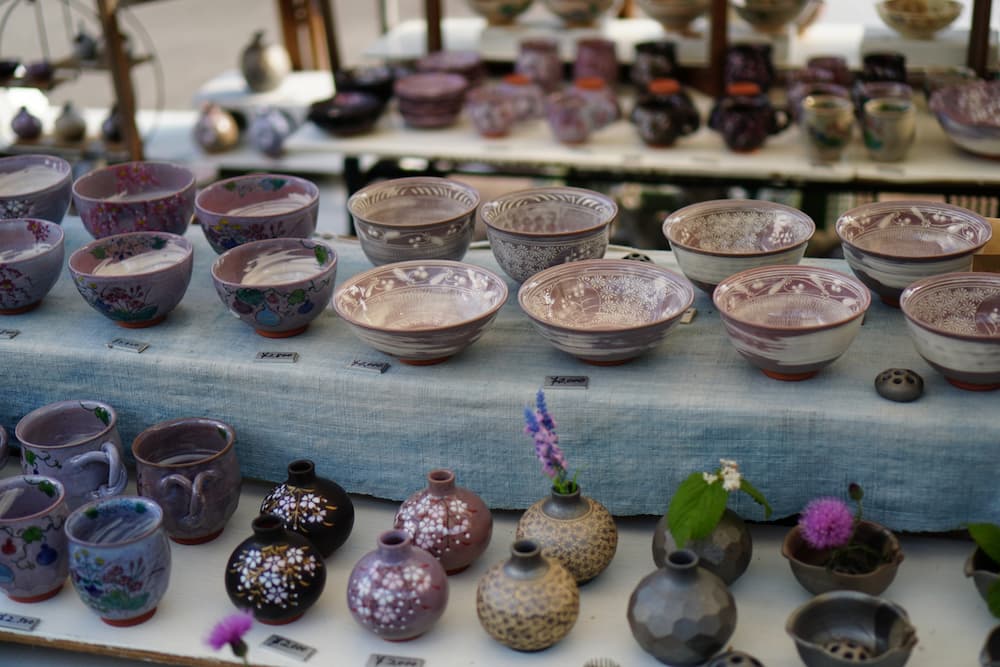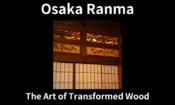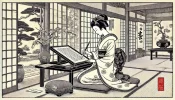Kyoto’s Ceramic Treasures: Unveiling the Allure of Kyo-yaki and Kiyomizu-yaki
Kyoto, the heart of traditional Japan, is a treasure trove of art and culture. But amidst the temples and geishas, there’s a hidden gem that often gets overlooked – the exquisite world of Kyo-yaki and Kiyomizu-yaki pottery. These ceramic masterpieces aren’t just pretty souvenirs; they’re windows into centuries of artistry and a testament to Kyoto’s unique spirit.
- A Journey Through Time: The History of Kyo-yaki and Kiyomizu-yaki
- Difference between Kyo-yaki and Kiyomizu-yaki
- The Artistry of Kyo-yaki and Kiyomizu-yaki: A Feast for the Eyes
- Where to Find Your Ceramic Soulmate in Kyoto
- Tips for Buying Kyo-yaki and Kiyomizu-yaki
- Conclusion: A Piece of Kyoto to Cherish
A Journey Through Time: The History of Kyo-yaki and Kiyomizu-yaki
The story of Kyo-yaki and Kiyomizu-yaki begins in the 17th century when Kyoto was the imperial capital. Skilled potters flocked to the city, drawn by its rich clay deposits and the patronage of the court.
Kyo-yaki, meaning “Kyoto ware,” quickly gained fame for its elegant designs and diverse styles. From tea bowls used in Zen ceremonies to colorful plates adorned with floral motifs, Kyo-yaki captured the essence of Kyoto’s refined aesthetic.
Meanwhile, Kiyomizu-yaki emerged in the Kiyomizu-dera Temple area, inspired by the temple’s pure spring water. This pottery is known for its distinctive reddish-brown clay and a unique glazing technique that creates a mesmerizing crackled effect.
Over the centuries, both Kyo-yaki and Kiyomizu-yaki evolved, embracing new techniques and artistic trends. But they always remained rooted in Kyoto’s traditions, reflecting the city’s changing tastes and cultural landscape.
Difference between Kyo-yaki and Kiyomizu-yaki
While Kyo-yaki and Kiyomizu-yaki are often used interchangeably, there are subtle differences that pottery aficionados appreciate.
Originally, Kiyomizu-yaki referred specifically to pottery made in the Kiyomizu-dera Temple area, known for its use of the temple’s pure spring water and the distinctive reddish-brown clay found nearby. Kyo-yaki, on the other hand, encompassed a wider range of pottery styles produced throughout Kyoto.
Today, the lines between the two have blurred, with many potters using both terms to describe their work. However, some distinctions remain.
Kyo-yaki is often associated with more traditional styles and techniques, such as the use of classic motifs and subdued colors. Kiyomizu-yaki, on the other hand, is sometimes seen as more experimental, embracing bolder colors, modern designs, and diverse glazing techniques.
But ultimately, the best way to understand the nuances between Kyo-yaki and Kiyomizu-yaki is to see them for yourself. Explore the pottery shops and studios of Kyoto, talk to the artisans, and let your own eyes and hands guide you to the pieces that speak to your heart.
The Artistry of Kyo-yaki and Kiyomizu-yaki: A Feast for the Eyes
What makes Kyo-yaki and Kiyomizu-yaki so special? It’s their unique blend of beauty, craftsmanship, and cultural significance.
Kyo-yaki is a visual delight, with each piece showcasing the potter’s creativity and skill. You’ll find everything from delicate tea bowls with subtle glazes to bold, colorful vases adorned with intricate patterns. Popular motifs include cherry blossoms, maple leaves, and scenes from nature.
Kiyomizu-yaki, on the other hand, is all about the glaze. The signature crackled effect, known as “貫入” (kannyu), is created by applying a special glaze that shrinks and cracks during firing. This results in a unique web-like pattern that adds depth and character to each piece.
Where to Find Your Ceramic Soulmate in Kyoto
Kyoto is a pottery lover’s paradise, with countless shops and studios showcasing Kyo-yaki and Kiyomizu-yaki. Here are a few must-visit spots:
Kiyomizu-dera Temple Area
This bustling district is home to numerous pottery shops, from tiny family-run businesses to larger galleries. Take your time exploring the narrow streets and alleys, and you’re sure to find something that catches your eye.
Asahido (Kiyomizu-zaka)
Gojozaka and Sannenzaka Streets
These charming streets leading up to Kiyomizu-dera are lined with traditional shops selling a variety of crafts, including pottery. The atmosphere is magical, especially in the evening when the lanterns are lit.
These charming streets leading up to Kiyomizu-dera are lined with traditional shops selling a variety of crafts, including pottery. The atmosphere is magical, especially in the evening when the lanterns are lit.
Shoindo (Sannenzaka Streets)
Kyoto Ceramic Center
This museum houses a collection of historical and contemporary Kyo-yaki and Kiyomizu-yaki, offering a deeper understanding of these crafts.
Pottery Classes
Want to try your hand at pottery making? Several studios in Kyoto offer classes for beginners and experienced potters alike. It’s a fun and unique way to experience Kyoto’s artistic traditions firsthand.
Tips for Buying Kyo-yaki and Kiyomizu-yaki
Ready to bring home a piece of Kyoto’s ceramic heritage? Here are a few tips:
- Look for the mark: Authentic Kyo-yaki and Kiyomizu-yaki pieces are usually marked with the potter’s seal or the kiln’s name. This is a sign of quality and authenticity.
- Don’t be afraid to ask questions: Shopkeepers are usually knowledgeable about the pottery they sell and can provide valuable information about the history, techniques, and artists behind each piece.
- Consider your budget: Kyo-yaki and Kiyomizu-yaki can range in price from affordable souvenirs to high-end works of art. Set a budget beforehand to avoid overspending.
- Handle with care: These ceramics are delicate, so be sure to pack them carefully if you’re taking them home.
Conclusion: A Piece of Kyoto to Cherish
Kyo-yaki and Kiyomizu-yaki are more than just pottery; they’re tangible expressions of Kyoto’s rich history, culture, and artistic spirit. Whether you’re a seasoned collector or a curious traveler, exploring these ceramic treasures is an unforgettable experience. So next time you’re in Kyoto, take some time to wander through the pottery districts, admire the craftsmanship, and perhaps even bring home a piece of this unique artistic heritage.









